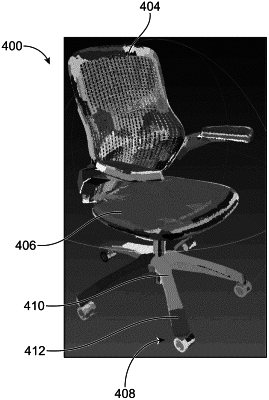| CPC G06T 17/00 (2013.01) [G06T 7/12 (2017.01); G06V 10/25 (2022.01); G06V 20/70 (2022.01); G06T 2207/10028 (2013.01); G06V 2201/07 (2022.01)] | 24 Claims |

|
13. A method for performing part segmentation, the method comprising:
generating one or more two-dimensional images of an object from a three-dimensional capture of the object;
receiving data identifying a part of the object;
processing the one or more two-dimensional images of the object to generate at least one two-dimensional bounding box that identifies, based on a vision language pretrained model and the data, the part of the object;
performing part segmentation of the three-dimensional capture of the object to generate a plurality of super points associated with the object;
based on the at least one two-dimensional bounding box, semantically labelling each super point of the plurality of super points to generate a plurality of semantically labeled super points;
based on the plurality of semantically labeled super points, merging at least one sub-group of super points from the plurality of super points that is associated with the part of the object to generate a three-dimensional point cloud; and
based on the three-dimensional point cloud, performing three-dimensional part segmentation on the part of the object.
|